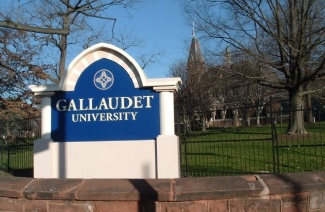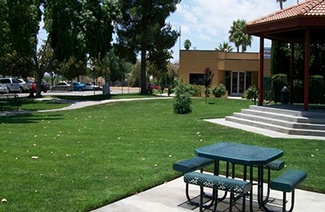GWD3-Q12 to Q15:
In its 1903 decision in the case of Lone Wolf v. Hitchcock, the United States Supreme Court rejected the efforts of three Native American tribes to prevent the opening of tribal lands to non-Indian settlement without tribal consent. In his study of the Lone Wolf case, Blue Clark properly emphasizes the Court’s assertion of a virtually unlimited unilateral power of Congress (the House of Representatives and the Senate) over Native American affairs. But he fails to note the decision’s more far-reaching impact: shortly after Lone Wolf, the federal government totally abandoned negotiation and execution of formal written agreements with Indian tribes as a prerequisite for the implementation of federal Indian policy. Many commentators believe that this change had already occurred in 1871 when—following a dispute between the House and the Senate over which chamber should enjoy primacy in Indian affairs—Congress abolished the making of treaties with Native American tribes. But in reality the federal government continued to negotiate formal tribal agreements past the turn of the century, treating these documents not as treaties with sovereign nations requiring ratification by the Senate but simply as legislation to be passed by both houses of Congress. The Lone Wolf decision ended this era of formal negotiation and finally did away with what had increasingly become the empty formality of obtaining tribal consent.
Q12: The author of the passage is primarily concerned with
A. identifying similarities in two different theories
B. evaluating a work of scholarship
C. analyzing the significance of a historical event
D. debunking a revisionist interpretation
E. exploring the relationship between law and social reality
Q13: According to the passage, which of the following was true of relations between the federal government and Native American tribes?
A. Some Native American tribes approved of the congressional action of 1871 because it simplified their dealings with the federal government.
B. Some Native American tribes were more eager to negotiate treaties with the United States after the Lone Wolf decision.
C. Prior to the Lone Wolf decision, the Supreme Court was reluctant to hear cases involving agreements negotiated between Congress and Native American tribes.
D. Prior to 1871, the federal government sometimes negotiated treaties with Native American tribes.
E. Following 1871, the House exercised more power than did the Senate in the government’s dealings with Native American tribes.
Q14: As an element in the argument presented by the author of the passage, the reference to Blue Clark’s study of the Lone Wolf case serves primarily to
A. point out that this episode in Native American history has received inadequate attention from scholars
B. support the contention of the author of the passage that the Lone Wolf decision had a greater long-term impact than did the congressional action of 1871
C. challenge the validity of the Supreme Court’s decision confirming the unlimited unilateral power of Congress in Native American affairs
D. refute the argument of commentators who regard the congressional action of 1871 as the end of the era of formal negotiation between the federal government and Native American tribes
E. introduce a view about the Lone Wolf decision that the author will expand upon
Q15:
According to the passage, which of the following resulted from the Lone Wolf decision?
A. The Supreme Court took on a greater role in Native American affairs.
B. Native American tribes lost their legal standing as sovereign nations in their dealings with the federal government, but their ownership of tribal lands was confirmed.
C. The federal government no longer needed to conclude a formal agreement with a Native American tribe in order to carry out policy decisions that affected the tribe.
D. The federal government began to appropriate tribal lands for distribution to non-Indian settlers.
E. Native American tribes were no longer able to challenge congressional actions by appealing to the Supreme Court.
GWD3-Q16:
Economist: Tropicorp, which constantly seeks profitable investment opportunities, has been buying and clearing sections of tropical forest for cattle ranching, although pastures newly created there become useless for grazing after just a few years. The company has not gone into rubber tapping, even though greater profits can be made from rubber tapping, which leaves the forest intact. Thus, some environmentalists conclude that Tropicorp has not acted wholly out of economic self-interest. However, these environmentalists are probably wrong. The initial investment required for a successful rubber-tapping operation is larger than that needed for a cattle ranch. Furthermore, there is a shortage of workers employable in rubber-tapping operations, and finally, taxes are higher on profits from rubber tapping than on profits from cattle ranching.
In the economist’s argument, the two boldfaced portions play which of the following roles?
A. The first supports the conclusion of the economist’s argument; the second calls that conclusion into question.
B. The first states the conclusion of the economist’s argument; the second supports that conclusion.
C. The first supports the environmentalists’ conclusion; the second states that conclusion.
D. The first states the environmentalists’ conclusion; the second states the conclusion of the economist’s argument.
E. Each supports the conclusion of the economist’s argument.
GWD3-Q17:
Brochure: Help conserve our city’s water supply. By converting the landscaping in your yard to a water-conserving landscape, you can greatly reduce your outdoor water use. A water-conserving landscape is natural and attractive, and it also saves you money.
Criticism: For most people with yards, the savings from converting to a water-conserving landscape cannot justify the expense of new landscaping, since typically the conversion would save less than twenty dollars on a homeowner’s yearly water bills.
Which of the following, if true, provides the best basis for a rebuttal of the criticism?
A. Even homeowners whose yards do not have water-conserving landscapes can conserve water by installing water-saving devices in their homes.
B. A conventional landscape generally requires a much greater expenditure on fertilizer and herbicide than does a water-conserving landscape.
C. A significant proportion of the residents of the city live in buildings that do not have yards.
D. It costs no more to put in water-conserving landscaping than it does to put in conventional landscaping.
E. Some homeowners use more water to maintain their yards than they use for all other purposes combined.
GWD3-Q18:
Which of following most logically completes the argument?
The last members of a now-extinct species of a European wild deer called the giant dear lived in Ireland about 16,000 years ago. Prehistoric cave paintings in France depict this animal as having a large hump on its back. Fossils of this animal, however, do not show any hump. Nevertheless, there is no reason to conclude that the cave paintings are therefore inaccurate in this regard, since ______.
A. some prehistoric cave paintings in France also depict other animals as having a hump
B. fossils of the giant deer are much more common in Ireland than in France
C. animal humps are composed of fatty tissue, which dose not fossilize
D. the cave paintings of the giant deer were painted well before 16,000 years ago
E. only one currently existing species of deer has any anatomical feature that even remotely resembles a hump
GWD3-Q19:
Possible long-term consequences of the “greenhouse effect,” the gradual warming of the Earth’s climate, may include melting the polar ice caps and a rising sea level.
A. may include melting the polar ice caps and a rising sea level
B. may include the melting of polar ice caps and the rising sea level
C. may include polar ice caps that are melting and sea levels that are rising
D. include melting the polar ice caps and sea levels that are rising
E. include melting of the polar ice caps and a rise in sea level
GWD3-Q20:
Shipping Clerk: The five specially ordered shipments sent out last week were sent out on Thursday. Last week, all of the shipments that were sent out on Friday consisted entirely of building supplies, and the shipping department then closed for the weekend. Four shipments were sent to Truax Construction last week, only three of which consisted of building supplies.
If the shipping clerk’s statements are true, which of the following must also be true?
A. At least one of the shipments sent to Truax Construction last week was specially ordered.
B. At least one of last week’s specially ordered shipments did not consist of building supplies.
C. At least one of the shipments sent to Truax Construction was not sent out on Thursday of last week.
D. At least one of the shipments that were sent out on Friday of last week was sent to Truax Construction.
E. At least one of the shipments sent to Truax Construction last week was sent out before Friday.
GWD3-Q21:
Data gathered by weather satellites has been analyzed by scientists, reporting that the Earth’s northern latitudes have become about ten percent greener since 1980, due to more vigorous plant growth associated with warmer temperatures and higher levels of atmospheric carbon dioxide.
A. Data gathered by weather satellites has been analyzed by scientists, reporting that the Earth’s northern latitudes have
B. Data gathered by weather satellites has been analyzed by scientists, and they report the Earth’s northern latitudes as having
C. After analyzing data gathered by weather satellites, scientists report that the Earth’s northern latitudes have
D. After analysis of data, gathered by weather satellites, scientists report the Earth’s northern latitudes as having
E. After data gathered by weather satellites was analyzed by scientists, who report that the Earth’s northern latitudes have
GWD3-Q22:
On account of a law passed in 1993, making it a crime punishable by imprisonment that a United States citizen hold gold in the form of bullion or coins, immigrants found that on arrival in the United States they had to surrender all of the gold they had brought with them.
A. On account of a law passed in 1993, making it a crime punishable by imprisonment that a United States citizen hold
B. With a law passed in 1933 that makes it a crime punishable by imprisonment that a United States citizen hold
C. A law passed in 1933 that made it a crime punishable by imprisonment for a United States citizen holding
D. Because of a law passed in 1933 making it a crime punishable by imprisonment for a United States citizen to hold
E. Due to a law being passed in 1933 that makes it a crime punishable by imprisonment for a United States citizen to hold

















